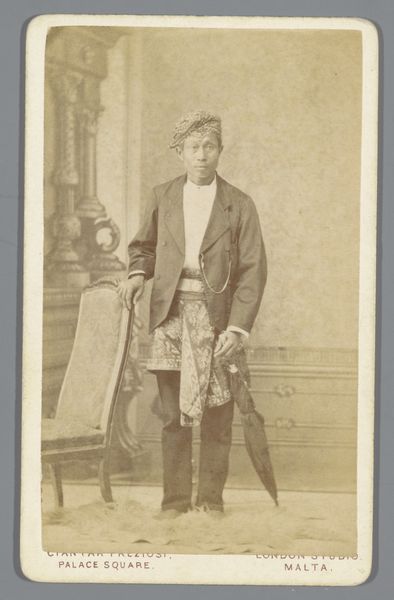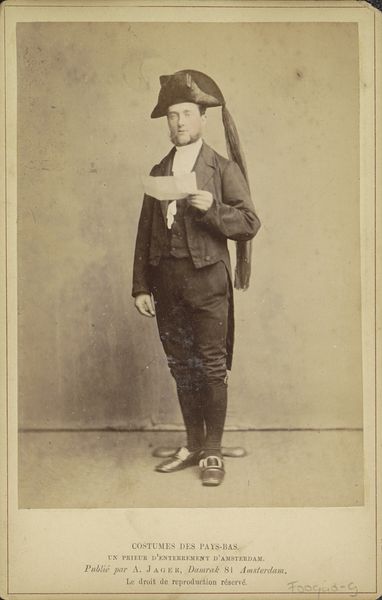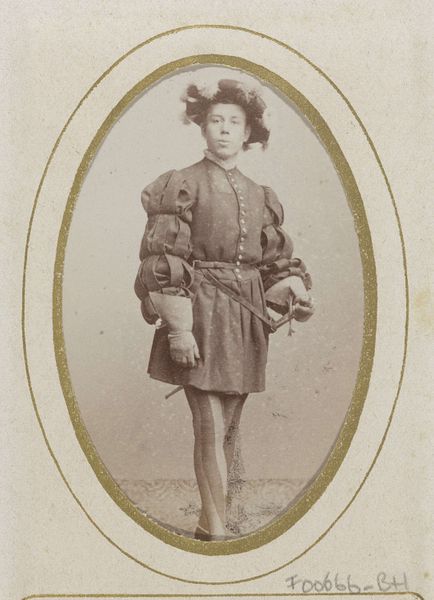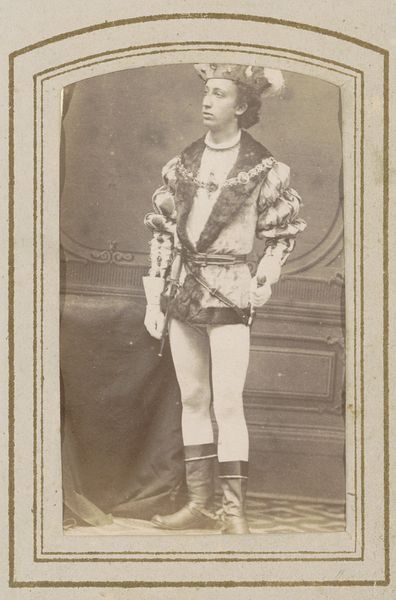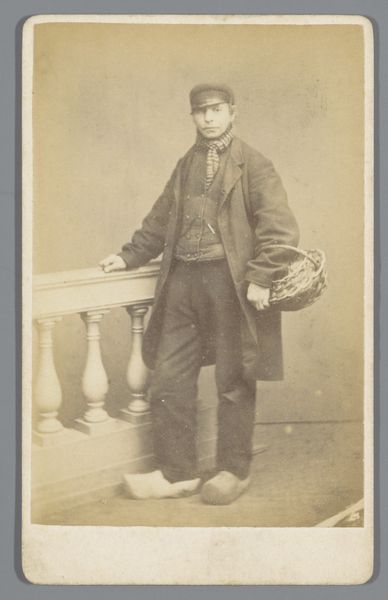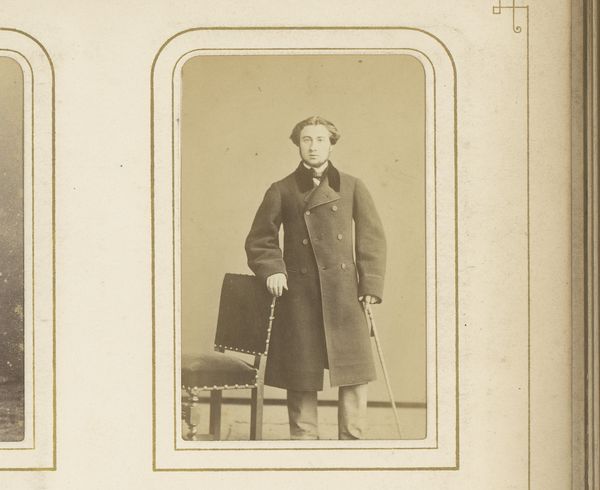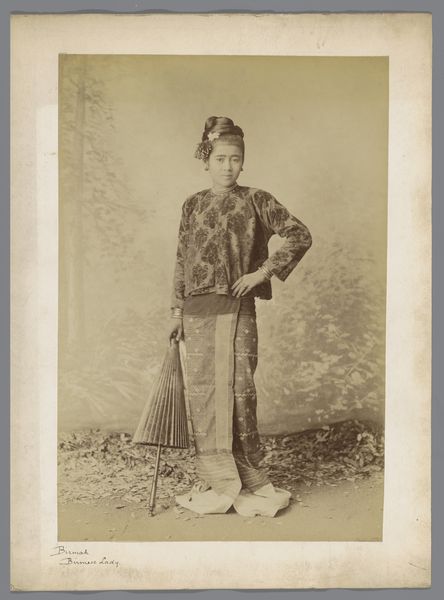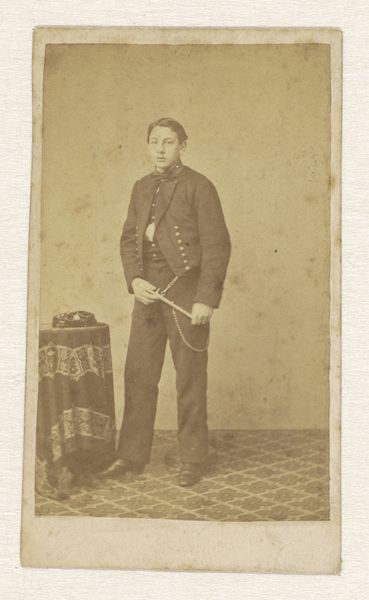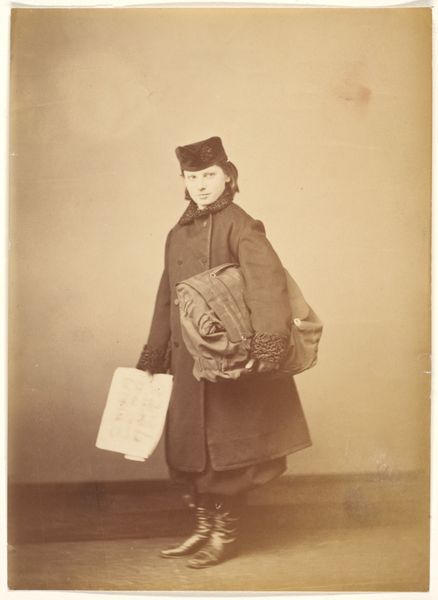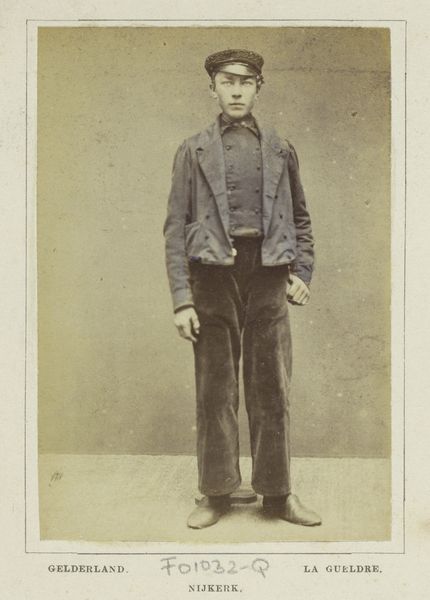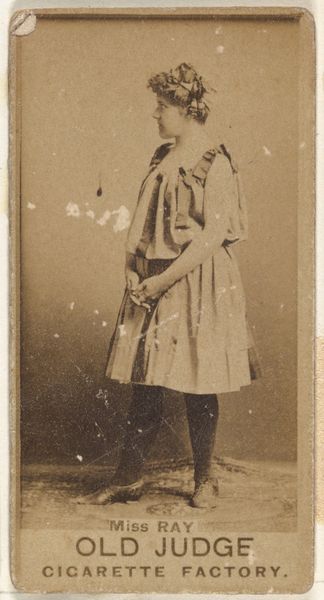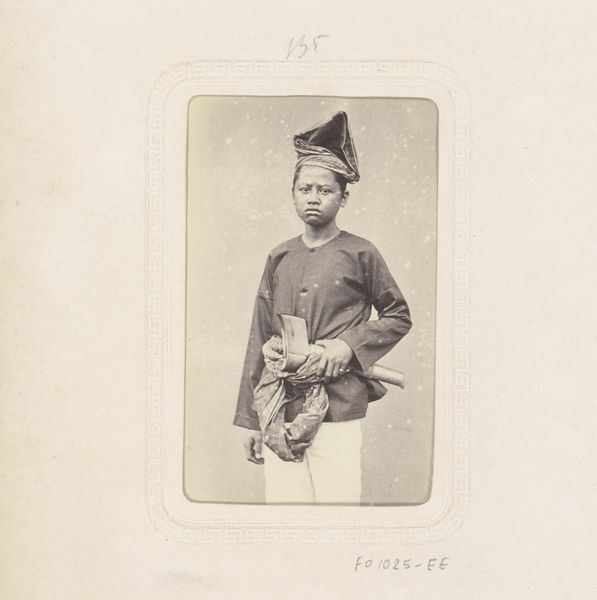
Portret van een onbekende protestantse aanspreker uit Amsterdam, Noord-Holland 1860 - 1890
0:00
0:00
photography
#
photography
#
historical photography
#
19th century
#
genre-painting
Dimensions: height 87 mm, width 56 mm
Copyright: Rijks Museum: Open Domain
Curator: This daguerreotype, taken somewhere between 1860 and 1890, captures a full portrait of an unknown Protestant "aanspreker" or funeral official from Amsterdam. It’s part of the Rijksmuseum collection. What are your first thoughts? Editor: Melancholy, definitely melancholy. He seems stiff, almost…resigned. It's not just the sepia tones, there's something about his posture and averted gaze. And look at the costume! What an archaic figure even then. Curator: Yes, it’s like he’s stepped right out of a Rembrandt painting! The attire is quite interesting—that wide-brimmed hat with ribbons, the long coat, knee breeches... almost theatrical, right? He also holds a piece of paper in his left hand, probably announcing the obituaries. Editor: Exactly. And given his role as a Protestant “aanspreker,” it’s loaded with historical significance. Consider the social implications of religion and class in Amsterdam during that period. These weren’t neutral announcements—they reinforced existing power structures within the community. And of course the figure of an ‘announcer of death’ is quite powerful. What a potent reminder of mortality! Curator: And you get the sense of that solemn duty from his bearing. Imagine what that must have been like. Think about his world— the somber tones, the gravity. As an image itself it possesses incredible weight and gravitas, what are your thoughts? Editor: What’s really striking is how this image pushes us to confront the realities of 19th-century life and the roles people played in it. It connects the intimate experience of loss with broader societal norms and practices. Curator: Indeed! In a way, this humble portrait does more than simply present a figure; it whispers narratives about faith, mortality, and societal order—capturing much more than first impressions can convey. Editor: It prompts us to ask not just *who* he was, but what his role meant for those around him, reflecting on the broader human experience connected with death. A fascinating, provocative artifact, wouldn't you agree?
Comments
No comments
Be the first to comment and join the conversation on the ultimate creative platform.
